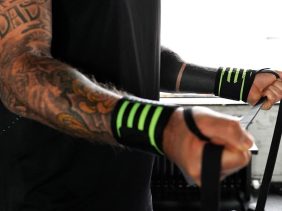Hot Yoga: Get hot with this 40-degree yoga practice
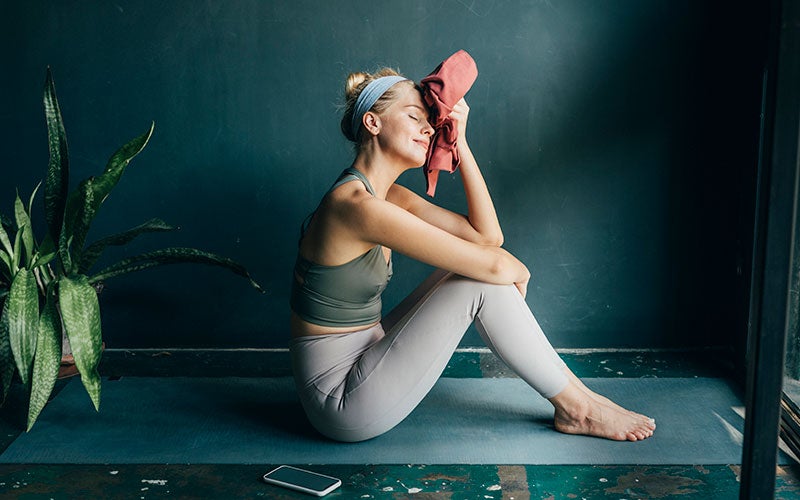 ©FreshSplash
©FreshSplash
Hot Yoga is demanding and sweaty. Classes take place in humid, 40 degree heat. Hot yoga is said to be especially beneficial for deep stretching and to get you in top shape. Learn here why this special yoga practice is so special and whether it could also make you sweat.
What is Hot Yoga?
Hot Yoga is a fairly new style of yoga, introduced in the late 1960s. Its founder is the yogi Bikram Choudhury, who developed the practice after suffering from a knee injury that restricted his mobility. Hot yoga was born: a fixed sequence of breathing exercises (pranayama) and physical postures (asanas) performed in a room heated to about 40 degrees and with a humidity of around 40 percent. This heated room is what distinguishes Hot Yoga from its model, traditional Hatha Yoga.
The temperature and humidity help keep muscles, tendons, and ligaments warm and well supplied with blood – lowering the risk of injury.
Today, hot Yoga is not only praised as being easy on the joints, but also as an effective fat burner. These classes can burn up to 700 calories per hour. In addition, the sweaty yoga session is said to help the body detoxify and to strengthen the immune system.
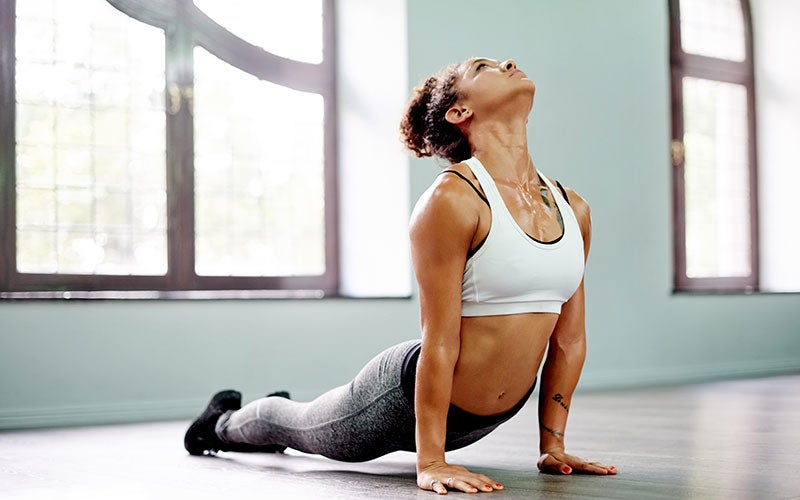
How does a Hot Yoga class work?
Hot Yoga is basically no different from other yoga styles around the world in terms of class structure. A session usually lasts 90 minutes. Throughout the class, students are taught the same fixed series of 26 asanas. At the beginning and at the end, they do a breathing exercise. These are intended to help the yogis ‘arrive’ and to conclude the class, respectively. The physical postures are strengthening, stability, and balance exercises as well as stretches – sitting, standing, and lying down on the mat.
You can expect the following 26 postures in Hot Yoga classes:
- Deep breathing (Pranayama)
- Half moon with back- and forward bend (Ardha Chandrasana and Padahastasana)
- Chair (Utkatasana)
- Eagle (Garurasana)
- Standing Forehead to Knee (Dandayamana-Janushirasana)
- Standing Bow (Dandayamana-Dhanurasana)
- Balancing Stick (Tuladandasana)
- Standing Separate-Leg Stretching Pose (Dandayamana-Bibhaktapada-Pashimothanasana)
- Triangle (Trikanasana)
- Standing Separate Leg Head-to-Knee Pose (Dandayamana-Bibhaktapada-Janushirasana)
- Tree (Tadasana)
- Toe Stand (Padagustasana)
- Corpse pose (Savasana)
- Wind-Removing Pose (Pavanamuktasana)
- Sitting forward fold (Paschimotanasana)
- Cobra (Bhujangasana)
- Half Locust (Salabhasana)
- Full Locust (Poorna-Salabhasana)
- Bow (Dhanurasana)
- Hero’s pose (Supta-Vajrasana)
- Half Tortoise (Ardha-Kurmasana)
- Camel (Ustrasana)
- Rabbit (Sasangasana)
- Head-to-Knee with Stretching Pose (Janushirasana-Paschimothanasana)
- Seated Spinal Twist (Ardha-Matsyentrasana)
- Fire Breath (Khapalabhati)
These asanas are typical poses from Hatha, which is arguably the most well-known form of yoga. They might not seem very challenging, especially for experienced yogis, but considering the combination of heat and humidity, that’s not exactly the case. Hot yoga involves a lot of sweat, and tends to tire the body out pretty quickly. Beginners in particular should approach the practice slowly and take breaks as needed.
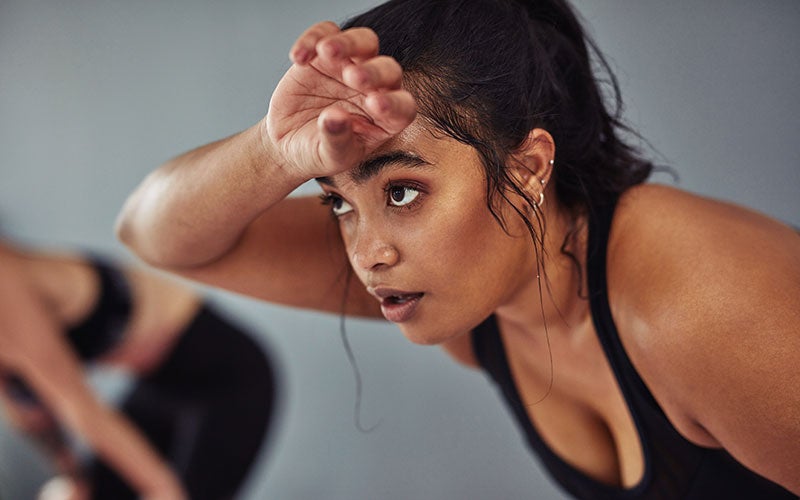
What are the benefits of hot yoga?
Is hot yoga worth the hype and the sweat? 40 degrees and 40 percent humidity can definitely have a huge impact on the body. Doing yoga in this environment can have any of the following effects:
- Your blood vessels dilate and stimulate circulation.
- Your fasciae become lubricated and more supple.
- Muscles, tendons, and ligaments become more flexible.
- Tension, especially around the spine, can release more easily.
- Your cardiovascular system kicks into high gear.
- Your pores open up and your body eliminates toxins through perspiration.
Healthy people can enjoy hot yoga without any problems, as long as they consciously listen to their body’s signals and take breaks if necessary. Much like saunas, people with heart conditions, very high or low blood pressure, diabetes, or who are running a fever are advised not to do hot yoga. The same applies to those who are pregnant. If you are unsure, you should always consult your doctor beforehand.
Can Hot Yoga help you lose weight?
Bikram gets the sweat flowing and the calories melting: You can burn up to 700 calories in one hour. The immediate weight ‘loss’ you might notice after a hot yoga class is mainly water, which means it’s super important to hydrate afterwards.
Is Hot Yoga suitable for everyone?
Anyone who wants to leave their comfort zone and is up for exploring both their physical and mental limits should definitely put Hot Yoga on their list. Whether a beginner or an advanced yogi, everyone can get their money’s worth. It may help to have taken a hatha yoga class beforehand to be familiar with the basic poses, but this is not a must. Of course, you should be able to handle heat and humidity. There is no shortage of sweating in hot yoga.
Since the first class is a major challenge for almost everyone, most yoga studios offer welcome packages. It’s best to attend two to three classes before deciding whether it’s for you.
Essential: drink plenty of water after class to balance out your hydration after all that sweating.
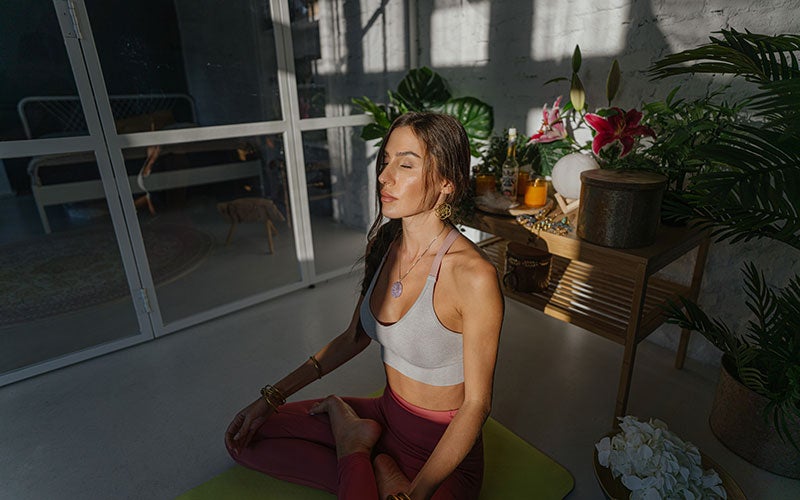
Alternatives to Hot Yoga
Is hot yoga a bit too intense for you? Looking for a little more yoga and a little less heat? Then one of these styles might be for you:
- Ashtanga: This kind of yoga is challenging and more suited for advanced yogis who want to practice self-discipline. Each class is structured in the same way and the exercises are practiced in the same sequence over and over again. Ashtanga is similar to hot yoga, except without the heat or humidity factors.
- Power Yoga: Power Yoga is derived from Ashtanga. Here, however, the exercises are individually adapted to the level of the practitioner. In this respect, this yoga style is somewhat freer than the strict Ashtanga teachings and is also suitable for beginners.
- Vinyasa: Vinyasa is dynamic and is characterized by flowing transitions between the asanas. In addition, you can expect meditations and relaxation exercises. It’s not only a physical practice, but often a philosophical or spiritual one as well.
- Hatha: If you want to get into traditional yoga, you should try Hatha, which pairs strengthening poses with conscious breath. You’ll learn basic asanas, breathing exercises, and meditation techniques so you’ll be ready for all other styles.
- Yin: If you want to improve your flexibility and agility, you can also try Yin. This style of yoga is much less sweaty and more meditative. Poses are held for longer periods of time, often up to ten minutes.
Summary
- Hot yoga is a modern variation of classical hatha yoga practiced in 40-degree temperatures and 40 percent humidity.
- In hotyoga, 26 fixed poses are performed in sequence, including breathing techniques and various asanas.
- It’s intended to be particularly easy on the joints and improve flexibility – with a low risk of injury.
- The yoga style is very fitness-oriented and does not incorporate any of the spiritual elements that are characteristic of other approaches.
- Hot Yoga is suitable for those looking for an intense, sweaty yoga style and want to challenge themselves both physically and mentally.
Sources for this article
We at foodspring use only high-quality sources, including peer-reviewed studies, to support the facts within our articles. Read our editorial policy to learn more about how we fact-check and keep our content accurate, reliable, and trustworthy.



























